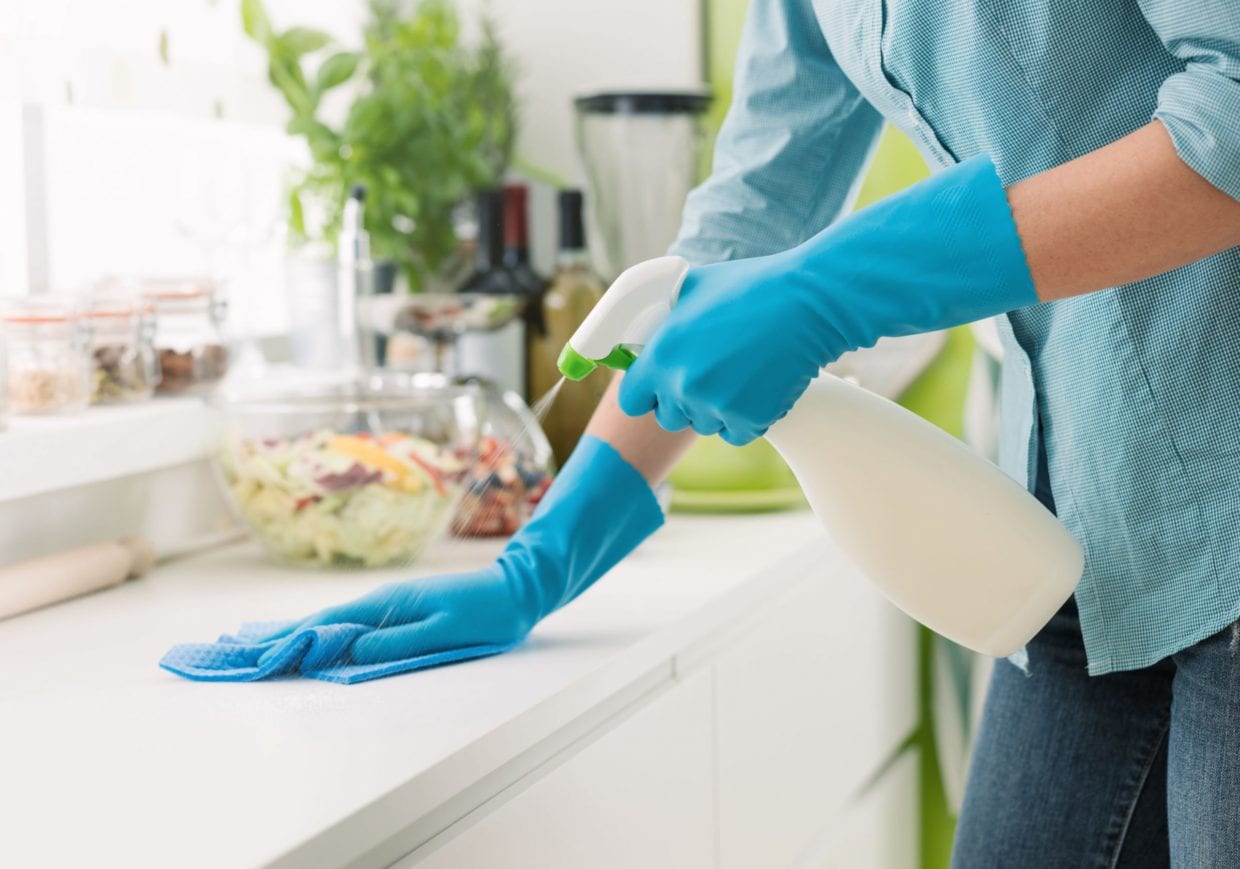Rarely ever will a family be excited about cleaning the home. Most often it’s regarded as a chore that must be done rather than something meant to protect the family. The frequency at which families clean will vary, but one thing that shouldn’t across all homes is the way that household cleaning products that contain hazardous chemicals are stored. Effectiveness at disinfecting and killing germs aside, these products often contain chemicals that can be life threatening in the wrong hands. Failure to store these products in a way that limits who can reach them can lead to children or pets being put in critical condition. Thus the need for more careful crafted storage systems that double as convenient and safe.
Every family member should become educated regarding these products, which will typically mean examining the label prior to use. If a child is incapable of reading the label, they should likely be kept away from the product. Within the label a product’s chemical make-up will be detailed, in connection with instructions and safety measures for proper use of the product. As if the label weren’t helpful enough, some of them will even include storage suggestions in addition to disposal suggestions. Families should do their best to remember each bit of information found on the label, however, as these labels will fade, families should make a note of which products require specific storage conditions or unique instructions.
While the most dangerous products should be stored in a different manner than some of the most frequently used products, sometimes too much of a product can be a bad thing. Many families fail to realize just how many cleaning products they have collected in their home. Rather than operating with excess household cleaning products and posing more risks to family members, declutter and only store the essentials. Rather than combining existing bottles, throw these older products out and use what products are left to the very last drop. Keeping excess products out of the home is a great way to reduce the possibilities for these products to fall into the wrong hands.
As mentioned previously, sometimes excess products can lead to dangerous situations that are otherwise avoidable. Thus the importance of the proper disposal of these household chemical products. Each family will make products last longer than others but finding ways to dispose of them when they have been exhausted is as important as storing them. Disposing of these products in inconsiderate ways can result in children or lingering animals coming into contact with them and potentially causing harm. Believe it or not, most home chemical products aren’t meant to be thrown away in the trash with other household items. Various towns and cities around the United States request specific ways for families to dispose of these products. Many local areas will have designated chemical disposal locations for these products. Consider doing some research on how your area handles these types of products before disposing of them in the easiest ways.
If it wasn’t already clear, the storage and disposal of these potentially hazardous chemical products is extremely important in guaranteeing the safety and well-being of each member in the home. Education around the proper ways to use each of these products, in addition to the proper ways to store these products, can greatly reduce the risk of chemical related injury for each member of the family. To learn more about the ways to safely store and dispose of these products, take a minute to check out the infographic included alongside this post.
Author bio: Lynn Place is Vice President of Marketing for SolvChem Custom Packaging Division. She has 30 years of professional experience in the manufacturing industry and specializes in consumer packaged goods, new product development and strategic planning.



